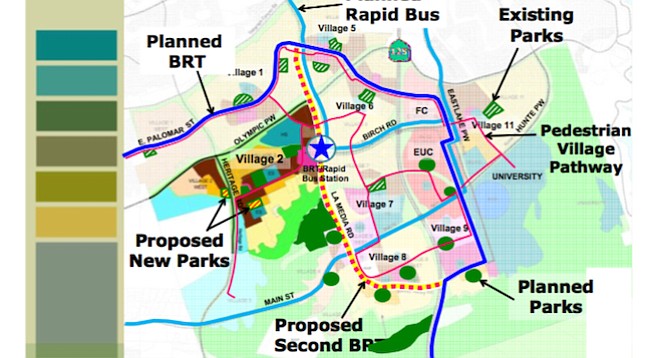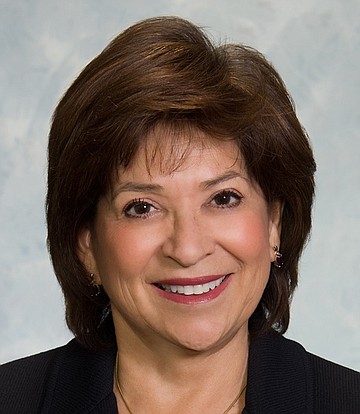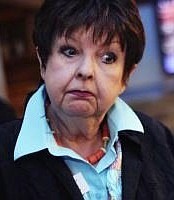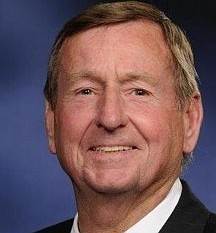 Facebook
Facebook
 X
X
 Instagram
Instagram
 TikTok
TikTok
 Youtube
Youtube

Chula Vista is changing the general plan (again) to increase housing density (again) in eastern Chula Vista.
On November 4, the city council passed a resolution amending the general plan to increase the density for Village 2, which is located south of Olympic Parkway and west of La Media Road. Baldwin & Sons is the developer.
The amendment will allow an additional 1562 housing units to be added to Village 2.
The council voted for this amendment in spite of the fact that the planning commission voted it down in early October.

Mark Liuag, a member of the planning commission since 2009, said in a November 7 interview, “Rarely do we [commissioners] vote against projects, but we voted this project down 5-1, with one abstention.”
Liuag said the commissioners’ primary concern was traffic.
“Several of the commissioners live out in the area and experience the traffic that already exists first hand.
“There are not enough access roads in that area to support the increased density in the project,” Liuag pointed out. “The main access street is the two-lane road Santa Victoria. Traffic study estimates indicate there will be approximately 9700 average daily [car] trips, 6.7 trips a minute, 7 days a week, 24 hours a day, at project completion on Santa Victoria.
“Folks in the morning have to wait through two or three signal lights to get out to the main streets [Olympic Parkway and La Media] today, and the project is only 25 percent complete.”
Liuag said, “I just found out yesterday that the city council voted to approve the project [November 4] and I was shocked. We asked to be notified when the project was going before the council. I would have gone before the council and spoken against it.”
To sweeten the proposal, Baldwin & Sons has offered to give the city $5000 per housing unit. The per-unit total would add up to about $7.8 million that could be spent at the city’s discretion. The money does not have to be spent in the impacted area.
But Liuag believes the project benefits don’t outweigh the problems. He said the planning commission did not even certify the environmental impact report.





“Sometimes the city looks at things in terms of dollars and cents, but there are problems that can’t be mitigated and in the end the net financial benefit to the city will only be $480,000 after ten years.”
There were several arguments advanced in favor of increased density in Village II, which is projected to have a rapid-transit bus line.
Councilmember Mary Salas said the project spoke to “new urbanism.…We have a population that is getting married later, having fewer children, and they don’t want to encumber themselves with a huge house, and kids are getting their driver’s licenses later and are not so in love with their cars.”
Councilmember Pamela Bensoussan said the project is about “workforce housing and connectivity.”
Kevin O’Neill, a local contractor who spoke in favor of the project, stated, “Once it gets built and we get enough people in a tight area, they will use the buses.”
Another argument advanced in favor of the project was that, with the increased density, developers would commit to fast-tracking Heritage Road, a north-south connection.
Several councilmembers pointed out that Heritage Road would connect eastern Chula Vista to Main Street. The city’s auto retailers are located on Main Street and councilmembers felt it would be good for auto retail and repair businesses.
Mayor Cheryl Cox said, “When you think of the notion of shop, dine, invest in Chula Vista, if a car isn’t one of the single most sales-tax-producing-purchases that you can make in Chula Vista, I don’t know what it is, other than a bigger diamond ring than I have.”
Mark Rheaume, a Village II resident, spoke in opposition to the amendment. Rheaume said he did not see the fast-tracking of Heritage as a priority because it will not improve the traffic congestion on Olympic Parkway, which he called “a nightmare.”
Rheaume’s primary reason for opposing the change was inadequate infrastructure — such as secondary schools, parks, and fire services in Village II. “The infrastructure is not in place now and the increased density will only exacerbate the problems.”
David Danciu, president of the civic group Crossroads II, also opposed the plan. Danciu advised the councilmembers that they should keep jobs and housing in balance. He noted that the general-plan amendment reduces the commercial space in Village II, which will reduce employment possibilities.
The council voted 4-1 in favor of the amendment.
Councilmember Rudy Ramirez cast the dissenting vote. Ramirez opposed the amendment because there “is not a sustainable financial model in place for providing city services.”
A general-plan amendment must go before the city council twice. A second reading of the proposed plan will happen sometime this month.


Chula Vista is changing the general plan (again) to increase housing density (again) in eastern Chula Vista.
On November 4, the city council passed a resolution amending the general plan to increase the density for Village 2, which is located south of Olympic Parkway and west of La Media Road. Baldwin & Sons is the developer.
The amendment will allow an additional 1562 housing units to be added to Village 2.
The council voted for this amendment in spite of the fact that the planning commission voted it down in early October.

Mark Liuag, a member of the planning commission since 2009, said in a November 7 interview, “Rarely do we [commissioners] vote against projects, but we voted this project down 5-1, with one abstention.”
Liuag said the commissioners’ primary concern was traffic.
“Several of the commissioners live out in the area and experience the traffic that already exists first hand.
“There are not enough access roads in that area to support the increased density in the project,” Liuag pointed out. “The main access street is the two-lane road Santa Victoria. Traffic study estimates indicate there will be approximately 9700 average daily [car] trips, 6.7 trips a minute, 7 days a week, 24 hours a day, at project completion on Santa Victoria.
“Folks in the morning have to wait through two or three signal lights to get out to the main streets [Olympic Parkway and La Media] today, and the project is only 25 percent complete.”
Liuag said, “I just found out yesterday that the city council voted to approve the project [November 4] and I was shocked. We asked to be notified when the project was going before the council. I would have gone before the council and spoken against it.”
To sweeten the proposal, Baldwin & Sons has offered to give the city $5000 per housing unit. The per-unit total would add up to about $7.8 million that could be spent at the city’s discretion. The money does not have to be spent in the impacted area.
But Liuag believes the project benefits don’t outweigh the problems. He said the planning commission did not even certify the environmental impact report.





“Sometimes the city looks at things in terms of dollars and cents, but there are problems that can’t be mitigated and in the end the net financial benefit to the city will only be $480,000 after ten years.”
There were several arguments advanced in favor of increased density in Village II, which is projected to have a rapid-transit bus line.
Councilmember Mary Salas said the project spoke to “new urbanism.…We have a population that is getting married later, having fewer children, and they don’t want to encumber themselves with a huge house, and kids are getting their driver’s licenses later and are not so in love with their cars.”
Councilmember Pamela Bensoussan said the project is about “workforce housing and connectivity.”
Kevin O’Neill, a local contractor who spoke in favor of the project, stated, “Once it gets built and we get enough people in a tight area, they will use the buses.”
Another argument advanced in favor of the project was that, with the increased density, developers would commit to fast-tracking Heritage Road, a north-south connection.
Several councilmembers pointed out that Heritage Road would connect eastern Chula Vista to Main Street. The city’s auto retailers are located on Main Street and councilmembers felt it would be good for auto retail and repair businesses.
Mayor Cheryl Cox said, “When you think of the notion of shop, dine, invest in Chula Vista, if a car isn’t one of the single most sales-tax-producing-purchases that you can make in Chula Vista, I don’t know what it is, other than a bigger diamond ring than I have.”
Mark Rheaume, a Village II resident, spoke in opposition to the amendment. Rheaume said he did not see the fast-tracking of Heritage as a priority because it will not improve the traffic congestion on Olympic Parkway, which he called “a nightmare.”
Rheaume’s primary reason for opposing the change was inadequate infrastructure — such as secondary schools, parks, and fire services in Village II. “The infrastructure is not in place now and the increased density will only exacerbate the problems.”
David Danciu, president of the civic group Crossroads II, also opposed the plan. Danciu advised the councilmembers that they should keep jobs and housing in balance. He noted that the general-plan amendment reduces the commercial space in Village II, which will reduce employment possibilities.
The council voted 4-1 in favor of the amendment.
Councilmember Rudy Ramirez cast the dissenting vote. Ramirez opposed the amendment because there “is not a sustainable financial model in place for providing city services.”
A general-plan amendment must go before the city council twice. A second reading of the proposed plan will happen sometime this month.
Comments